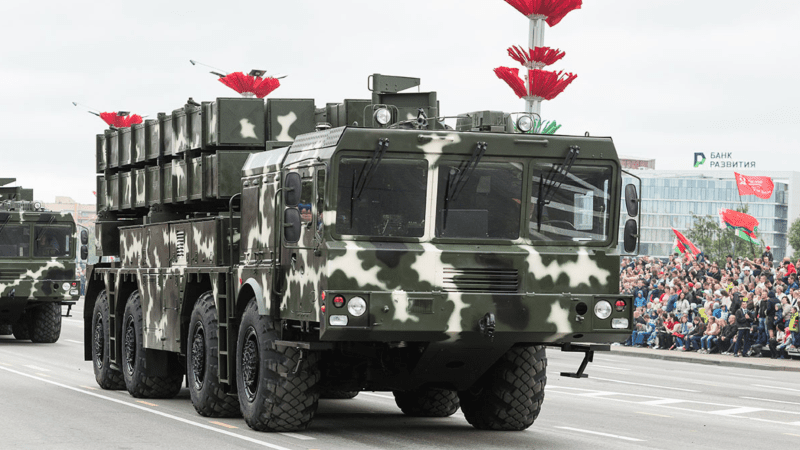Belarus With Nuclear Weapons Carriers in its Arsenal [COMMENTARY]

Photo. mil.ru
During Alexandr Lukashenko’s visit to St. Petersburg, Vladimir Putin announced that Belarus would receive a system capable of launching tactical nuclear missiles. The above refers to the Iskander-M launchers, and upgrades that potentially would be made to the Su-25 attack aircraft.
The Iskander-M systems can launch ballistic, or cruise missiles. Meanwhile, the Su-25 is a CAS platform, with a low payload capacity and range. It is not an aircraft designed to deliver nuclear weapons. The modification of that aircraft that would render it capable of carrying light tactical nuclear weapons is theoretically doable, but it cannot be said that the Su-25 is an optimal nuclear armament delivery platform.
The previously made statements on the aforesaid Iskander missiles or possible modification of the Belorussian Polonez rocket artillery system seem to be far more threatening.
The announcement on modification of the Belorussian Su-30SM multi-role combat aircraft, so that they become nuclear-capable, seems to be reasonable.
Belarus only operates a couple of these. Ultimately it is expected that 12 aircraft are in service, within a single squadron of modest size. The Su-25 is operated by Belarus in high numbers, meanwhile. 67 aircraft remained in active service earlier this year. If these were not partially sold to Russia, or the Wagner's Group - also operating the type - that number may play a significant role in a potential conflict.
The transfer of nuclear-capable systems to Belarus does not mean that Lukashenko would receive the weapons or any autonomy in using the nuclear warheads. The nuclear capabilities of Belarus would probably be reminiscent of those Poland had during the Cold War, when the Polish Su-20 and Su-22 fighter-bombers (also better suited to these tasks, than the Su-25), as well as the MiG-21 and MiG-23 fighters, along with 9K52 Luna, and 9K72 Elbrus tactical missile launchers, and 2S7 Pion self-propelled artillery were all capable of delivering tactical nuclear weapons. The bombs were stored in Soviet bases located within the Polish People's Republic territory. A similar level of autonomy would probably be granted to Belarus. The warheads that it may use would probably be placed either in Russia or in Russian bases, within the territory of Belarus.
Modifying a broad range of Belorussian platforms to be able to deliver nuclear weapons had been mentioned earlier, between 2021 and 2022. The new doctrine for the Union State of Belarus and Russia assumes that nuclear weapons would play a far more significant role now. Open declarations within that scope, and reinforcing the Belorussian society in its belief in Russia's power is a propaganda measure. Belarus still maintains bases that are ready to store nuclear weapons - this was mentioned by Lukashenko himself.
It is unclear whether the nuclear weapons are stored there, but a potential transfer of warheads from Russia, with the infrastructure in place, may be a quick process. Back in February 2022, the Belorussian constitution changed, to make it possible for Russia to deploy nuclear warheads in the Belorussian territory. Before that, from 1996, Belarus formally had been a nuke-free state.
The steps taken towards making the Belorussian Su-25s nuclear-capable may be viewed as a sign of weakness, as Russia is unable to offer actual, nuclear-capable air platforms to Belarus. The Belorussian missile forces would be reinforced, as they would now operate Iskander systems, along Polonezs and Tochkas. The Iskander system remains capable of launching modern cruise and ballistic missiles. The Russian units using the Iskander system have been frequently deployed to Belarus, from where they were striking targets in Ukraine.

WIDEO: Defence24 Days 2025: Premier Defence & Security Conference in CEE